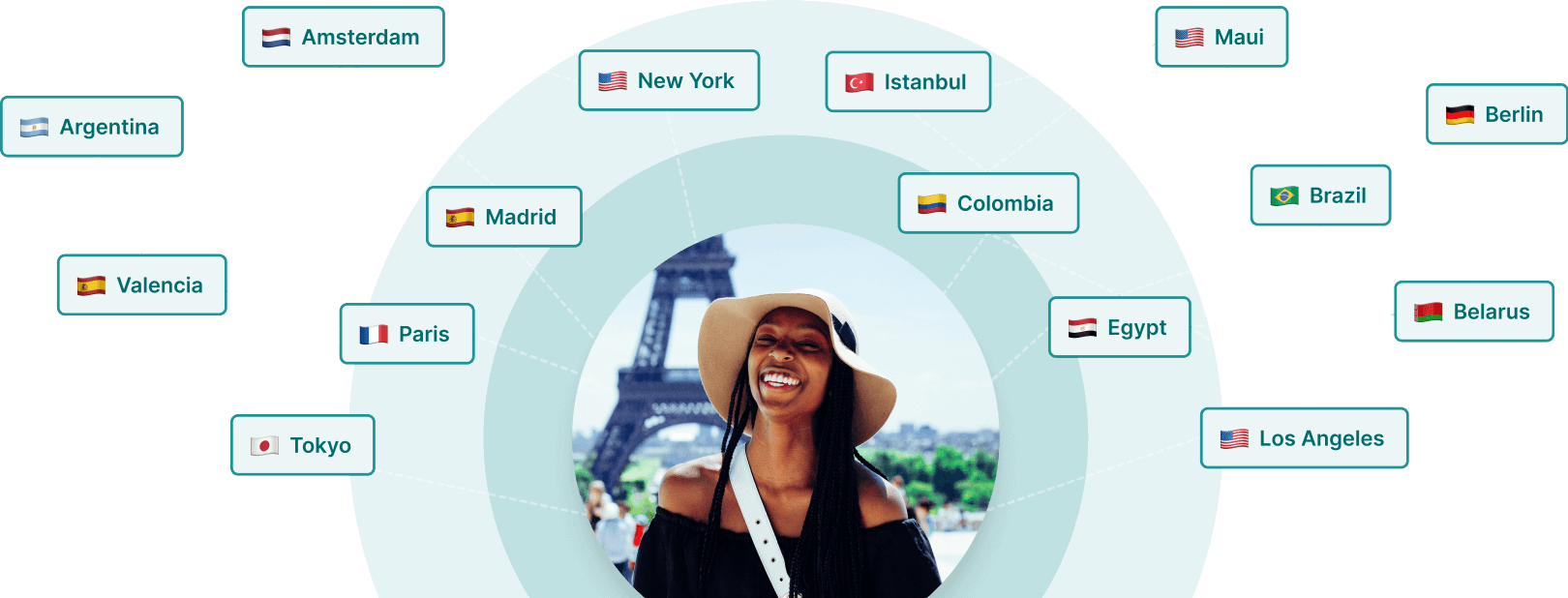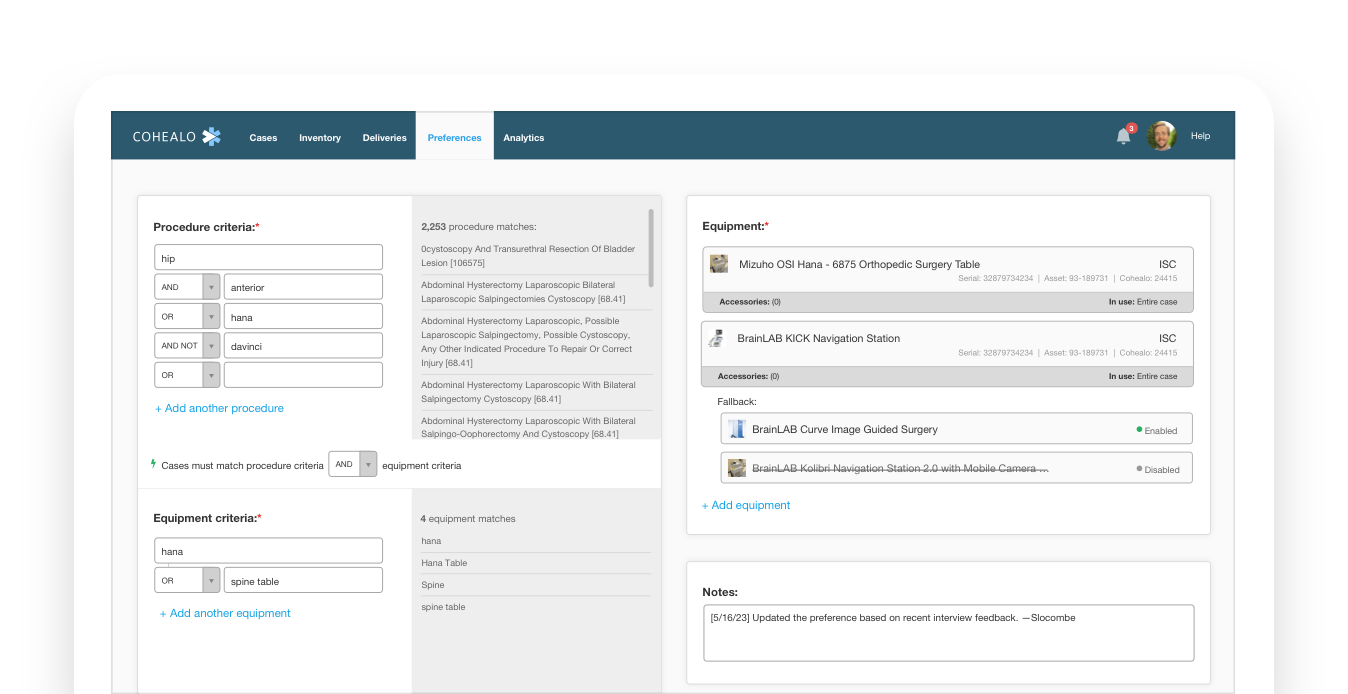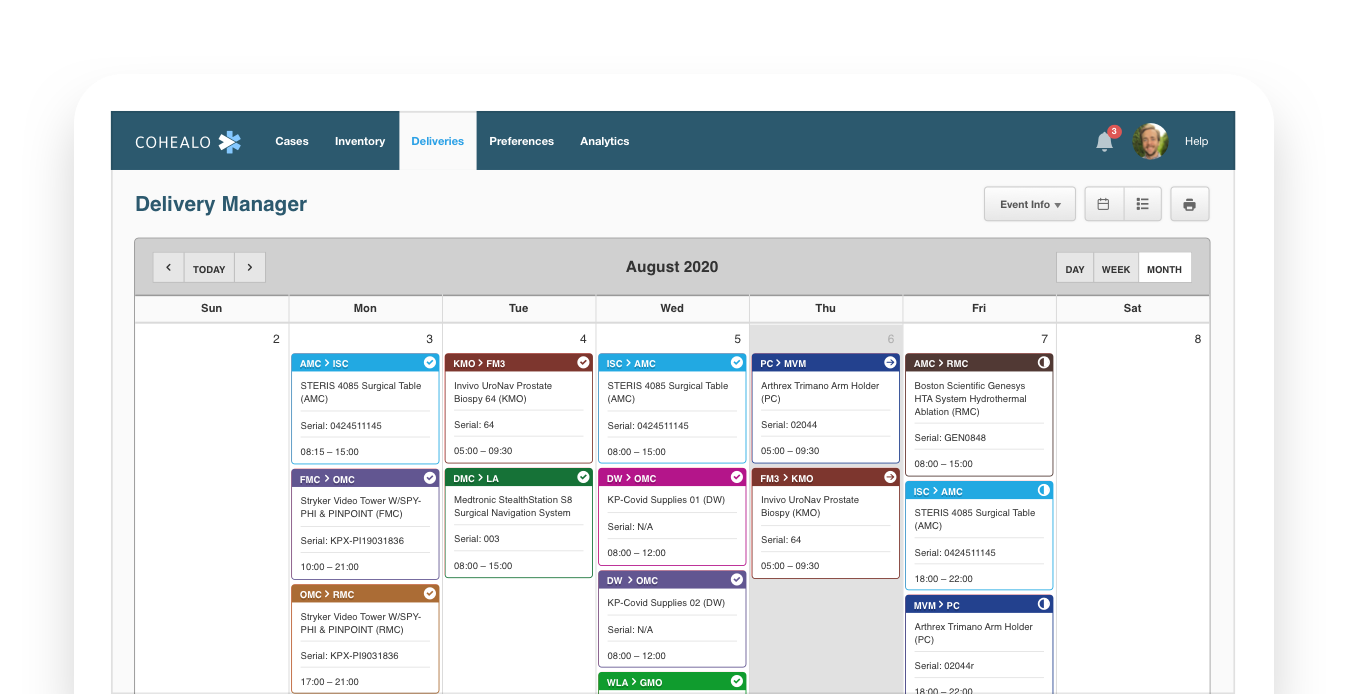
Noad Exchange founders Austin and Jonah are digital nomads who were tired of poorly outfitted Airbnbs making their lodging easy but their work difficult. They set out to solve this issue once and for all, creating a home exchange and travel platform focused on providing homes fit for the working traveler.
The Problem

An Aging MVP
Austin & Jonah had previously built their MVP by connecting a group of point solutions. This is a great way to approach an MVP build, as it quickly and affordably taught them a lot about their users and their business.
As more users joined, the MVP revealed its limitations, most notably in the user experience. They decided it was time to upgrade their product to a full stack solution, ditching the constraints of point solutions, allowing them to deliver a better user experience.
The Challenge
From MVP to Full Stack
We understood the problem, so we set goals to define what success looks like.
counter_1
Define the solution set
Clarify & define a set of solutions that work in harmony for an excellent user experience.
counter_2
Hosting conversions
Design an onboarding experience that makes it simple & easy to list a home.
counter_3
Booking conversions
Create a personalized experience that makes finding your next destination delightful & encouraging.
counter_4
Connect host & traveler
Design an experience where travelers and hosts are effortlessly guided through conversation to manage bookings & logistics.
counter_5
Dev-ready assets
Produce development-ready design assets for easy hand-off & implementation.
Approach
Embracing a project timeline of six weeks, my approach was to follow a “discover, define, design, deliver” process. I wanted to have a defined solution set by week three, prompting me to dive straight into the discovery phase.
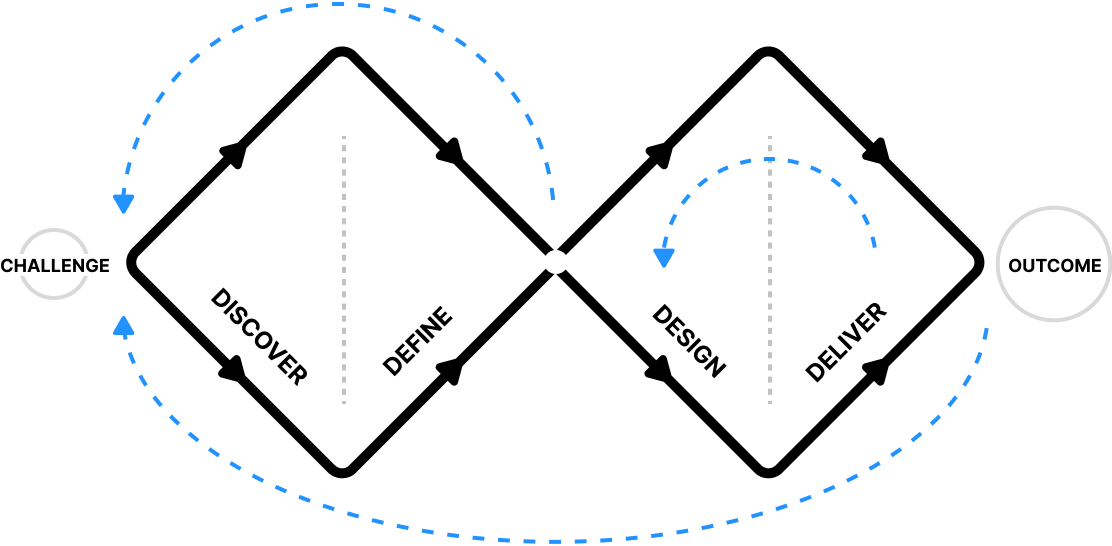
My Role
I was the lead designer on this project, working for Flux Bucket, a product design agency. We were a small team, so I owned and led all aspects of the project.
Research & Discovery
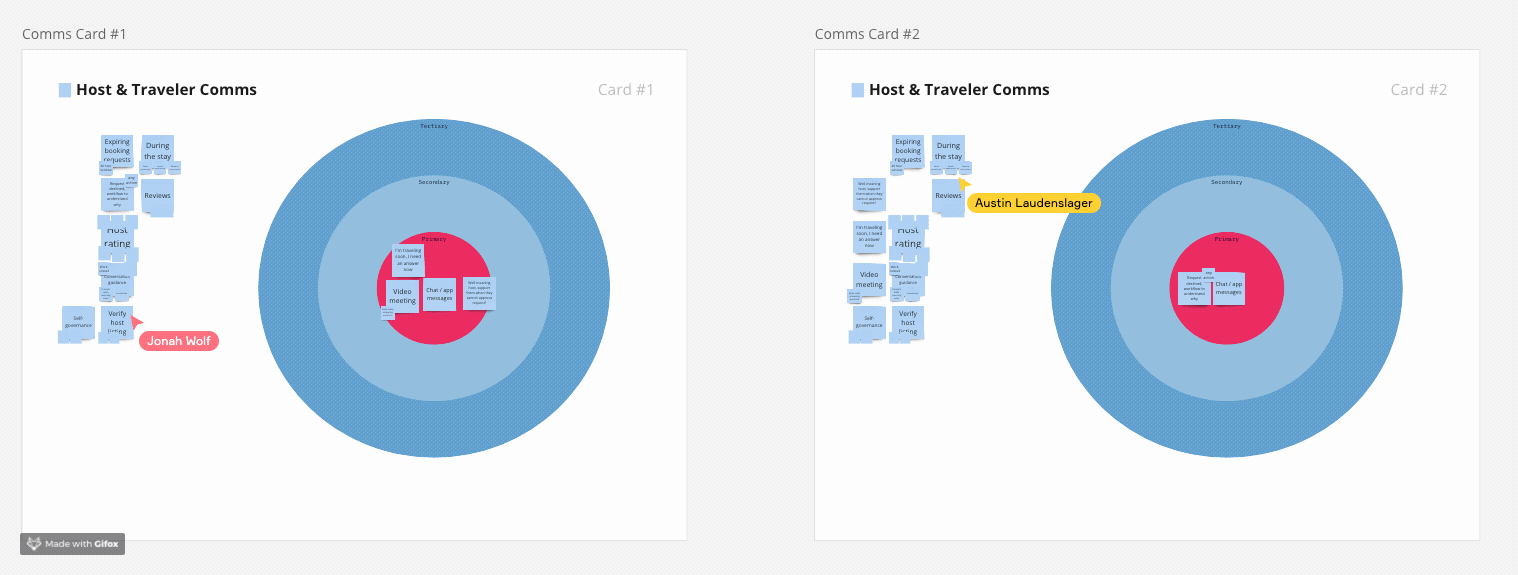
Tapping into founder experience
The founders had a head start by building, operationalizing, and productizing their early stage business, so it meant we could tap into their extensive knowledge for valuable insights. We used a brainstorm and prioritization exercise to surface the best ideas, identify areas of alignment, and encourage healthy debate in areas of disagreement. The activities yielded promising solution ideas, but the real gold is in learning the insights behind the solutions.
Speaking to users
We interviewed hosts and travelers to understand their needs, preferences, and pain points. Interviews included digital nomads types, non-traveling remote workers, and new and current users. Speaking directly to people helps us gather data which is incorporated into our design process to ensure it's user-centered.
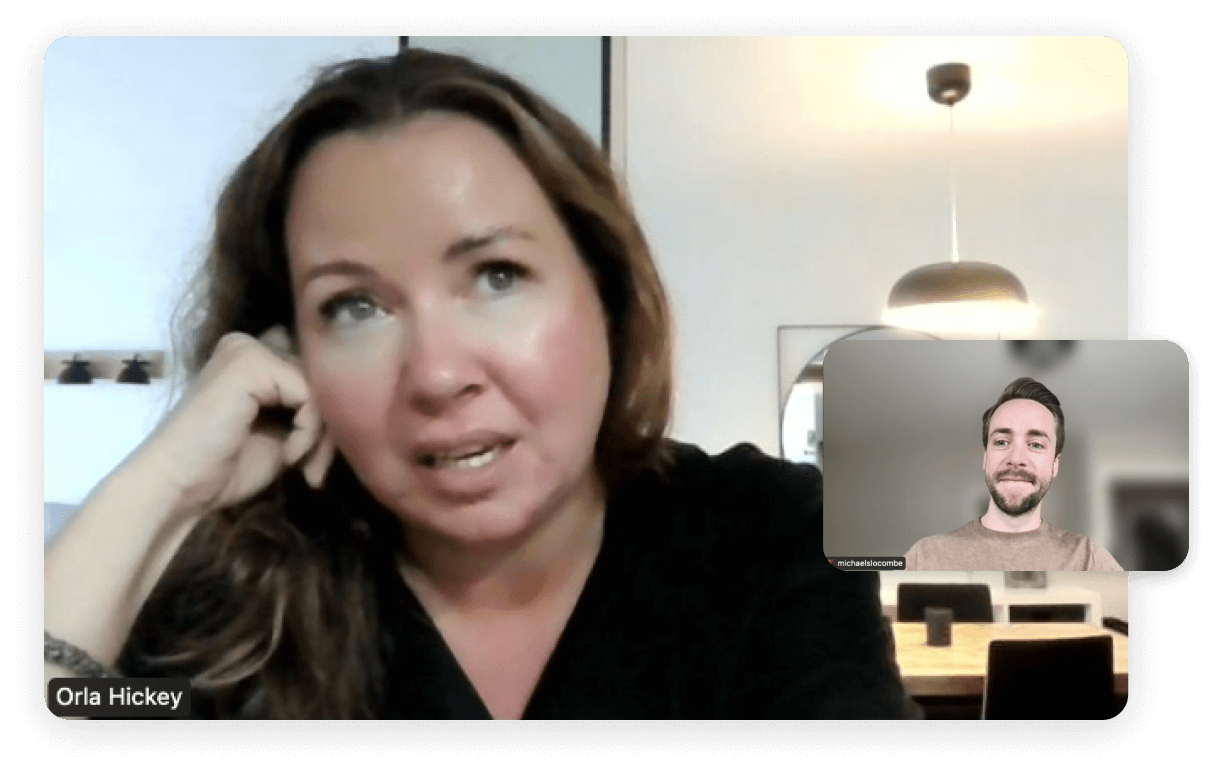
Getting immersive: hosting and traveling myself
Noad Exchange members often host using their primary residence, which turned out to be an important psychological factor in hosting members, so naturally I wanted to experience it myself.
I stayed in a Noad Exchange member's home and hosted a member in my own. As a host, I experienced first hand what it was like to receive reservation requests, meet travelers via video call, prepare my home, and communicate throughout the stay. As a traveler, I kept a daily diary of what my stay was like.
Immersive research like this enables me to identify unmet needs and uncover valuable insights that traditional research methods may miss.
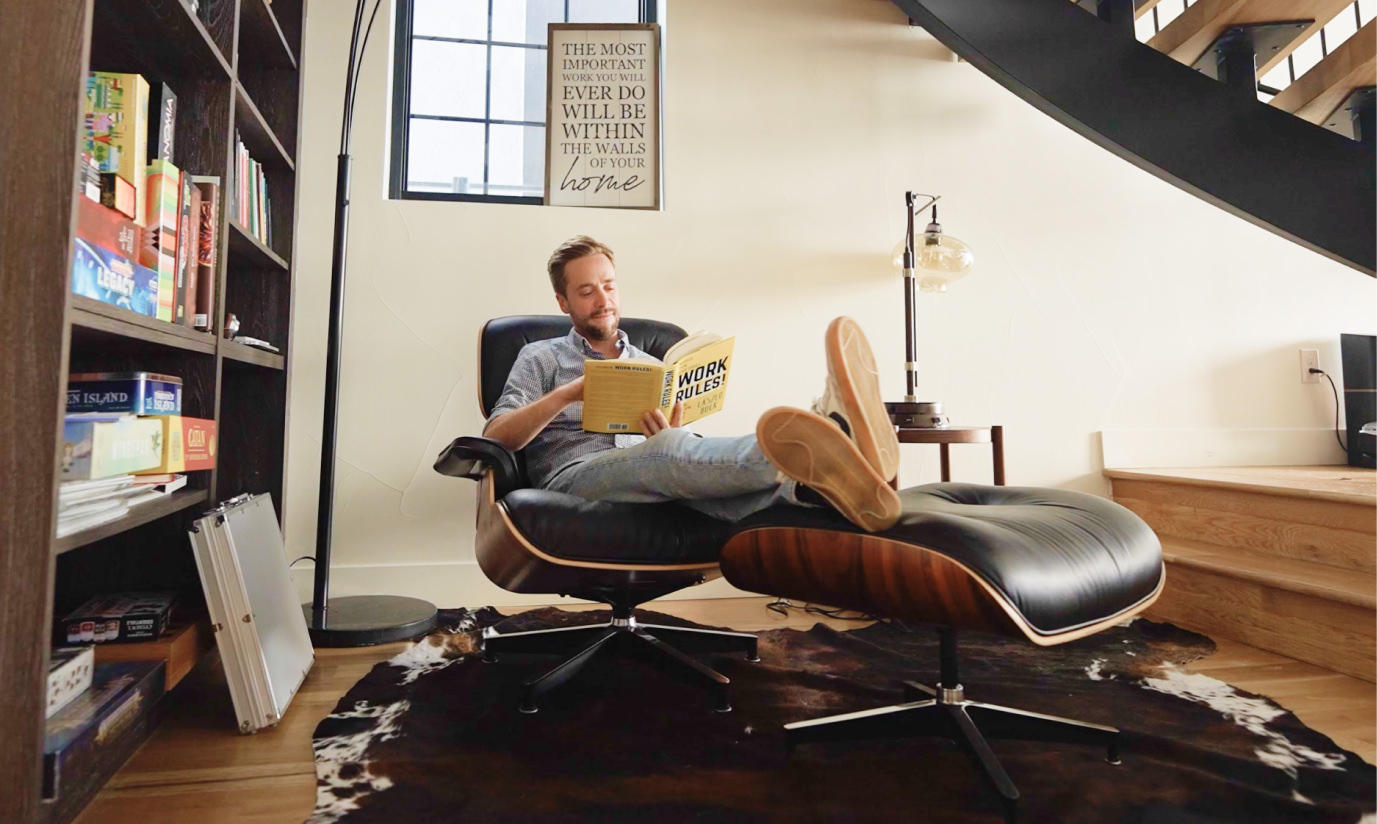
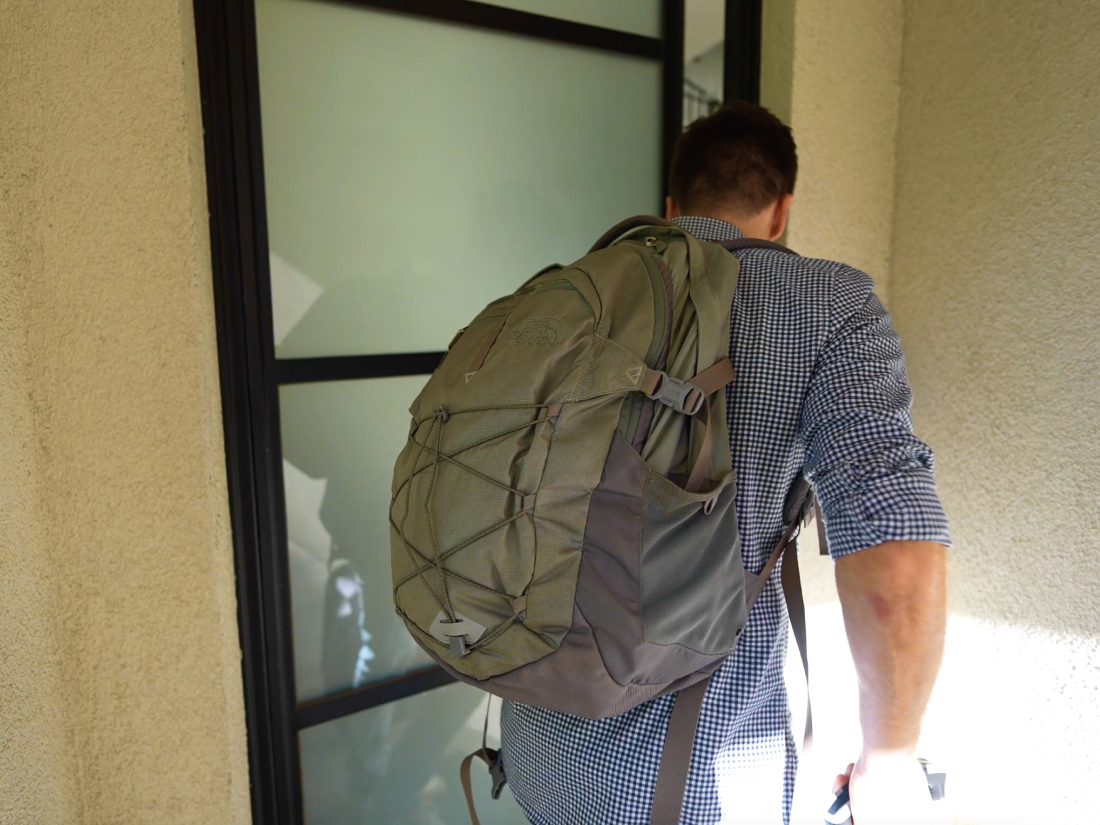
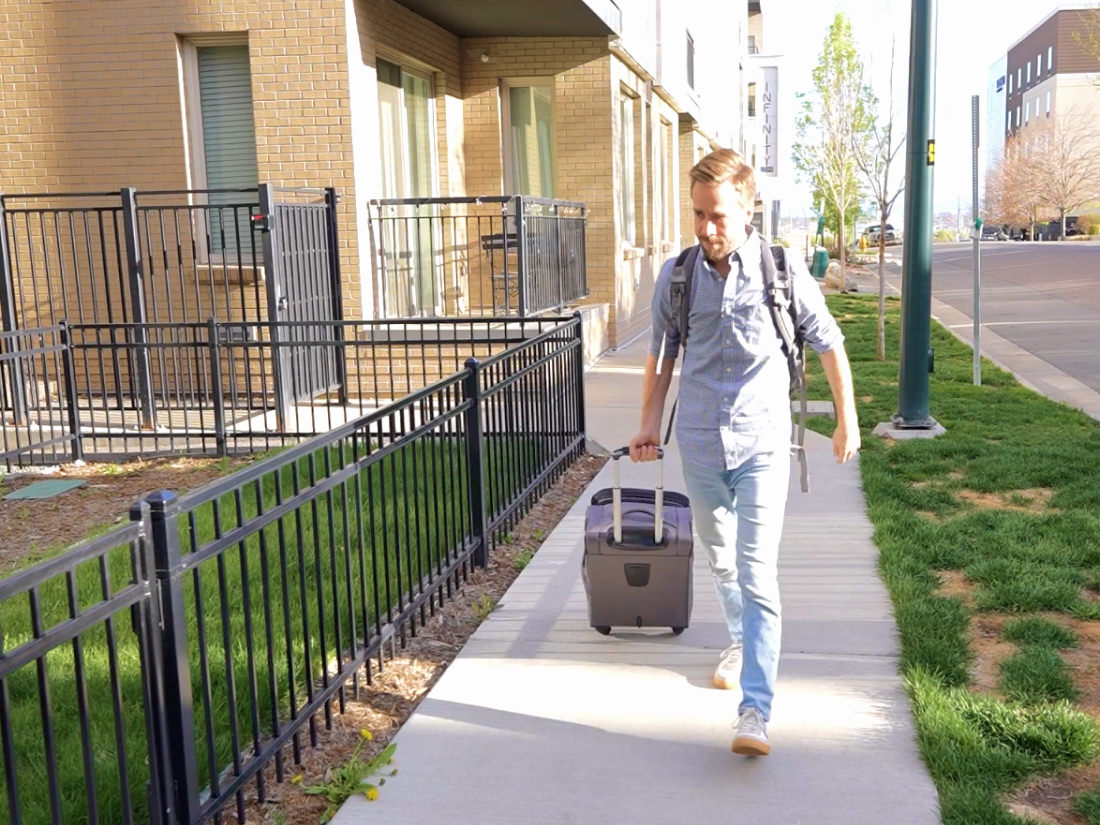
Defining Solutions
Through the discovery process, I assembled a catalog of experiences and features aligned with the project goals. To streamline my decision-making, I mapped each feature to the foundational components of the Noad platform, often encompassing multiple dimensions.
elevation
User Onboarding
Make it easy to join the Noad community
hiking
Travel
A personalized travel experience, prioritizing discovery
holiday_village
Home Listing
Simple, safe, and educational host experience
voice_selection
Communication
Connect & guide the Noad community
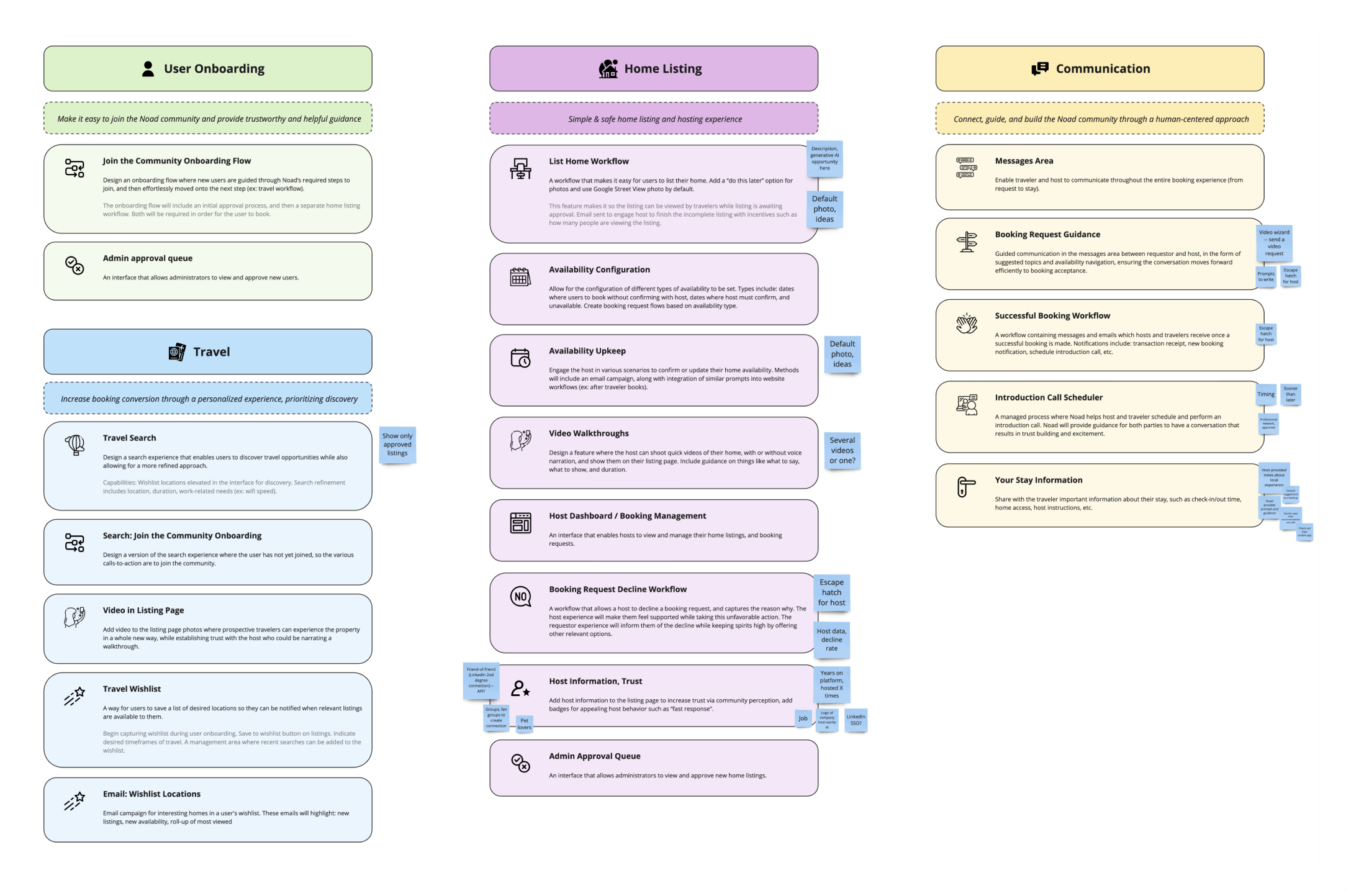
Prototype & Testing
A Fast Iteration & Feedback Loop
I spent the next two weeks developing wireframes and interactive prototypes. This allowed me to collect the greatest amount of feedback in the shortest amount of time.
About every couple days, I would user test new areas of the application I had developed. This would be a feedback session on wireframes or observing an interactive prototype.
This feedback enabled me to course correct early and often, resulting in better work.
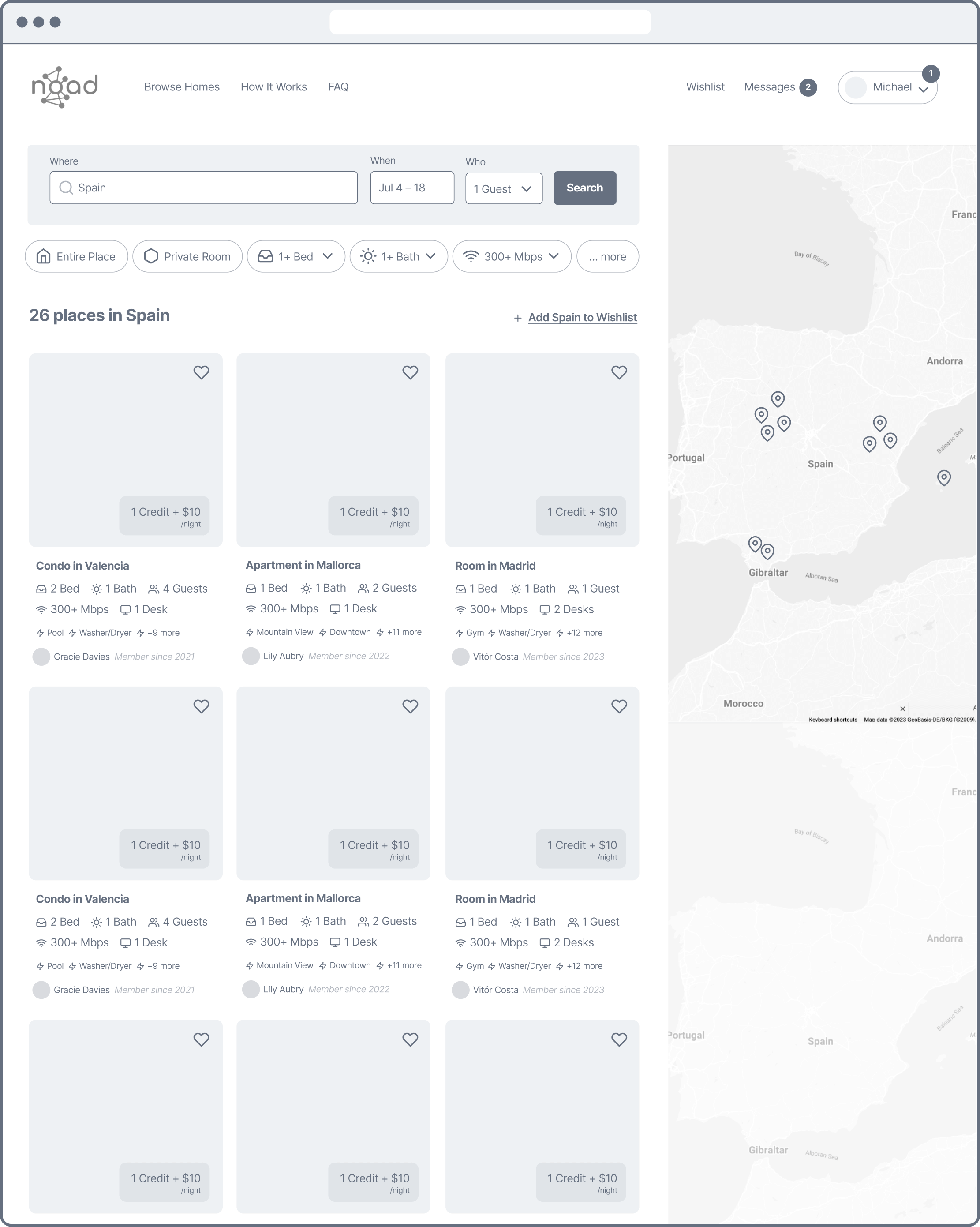
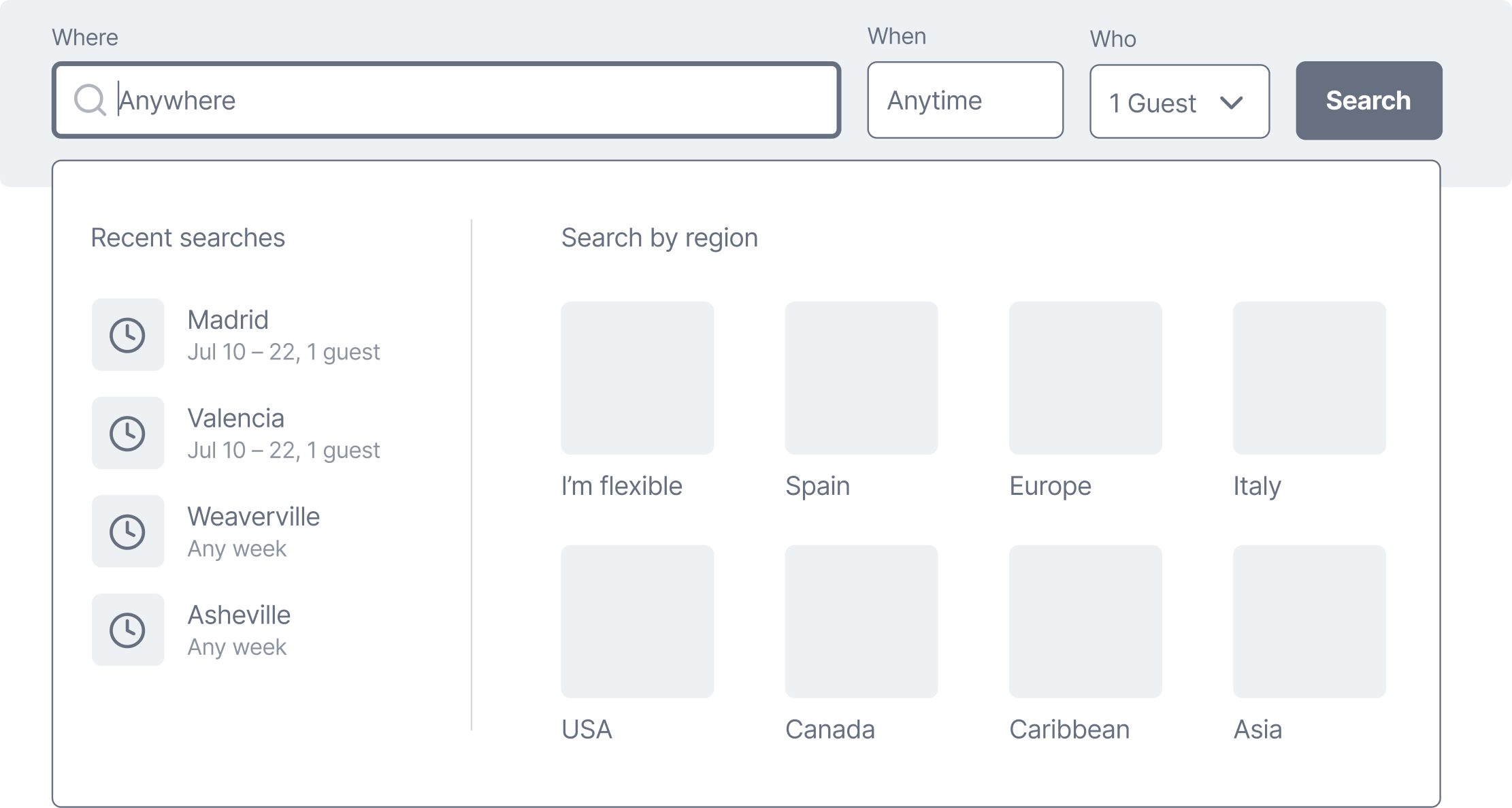
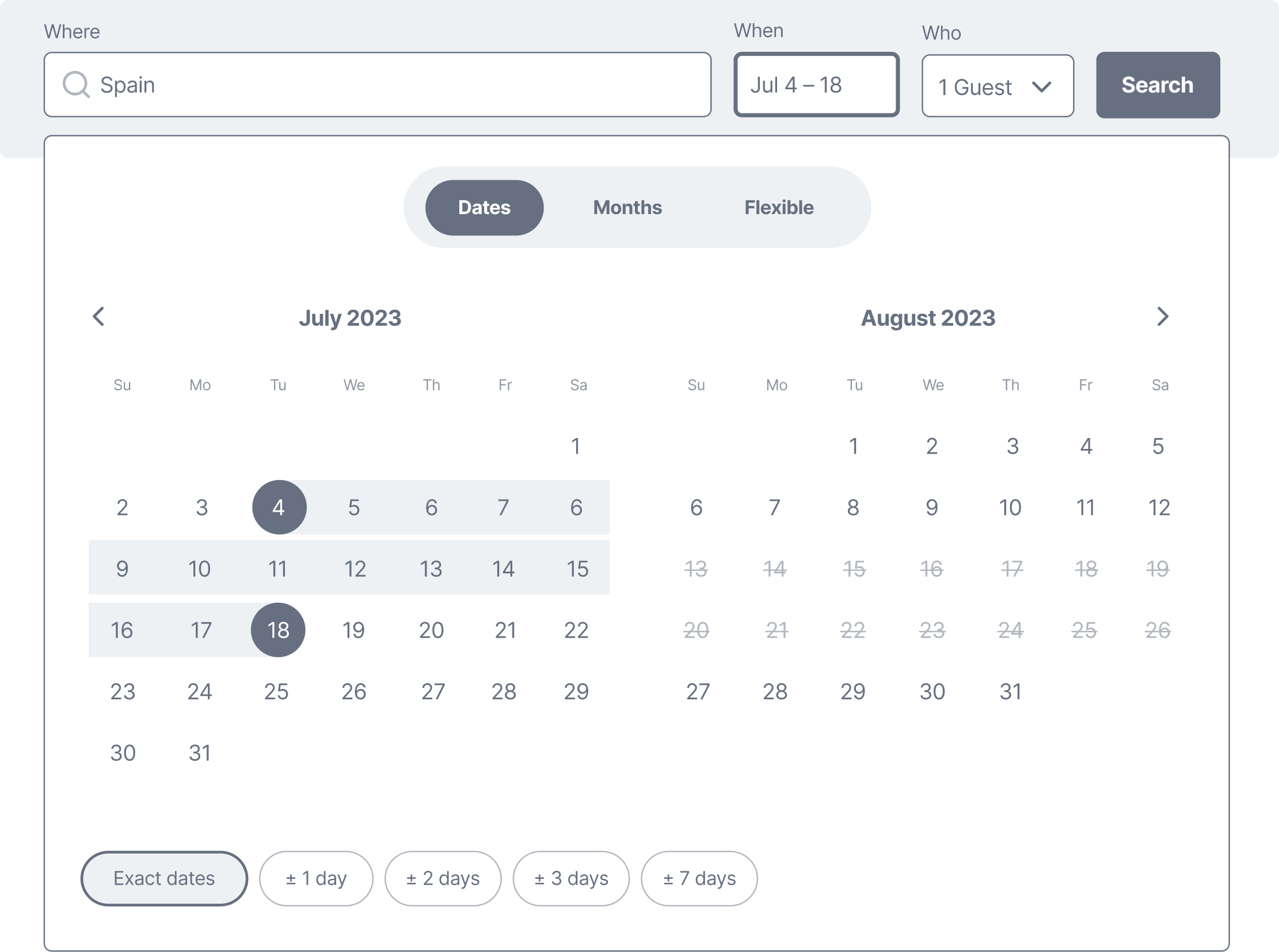
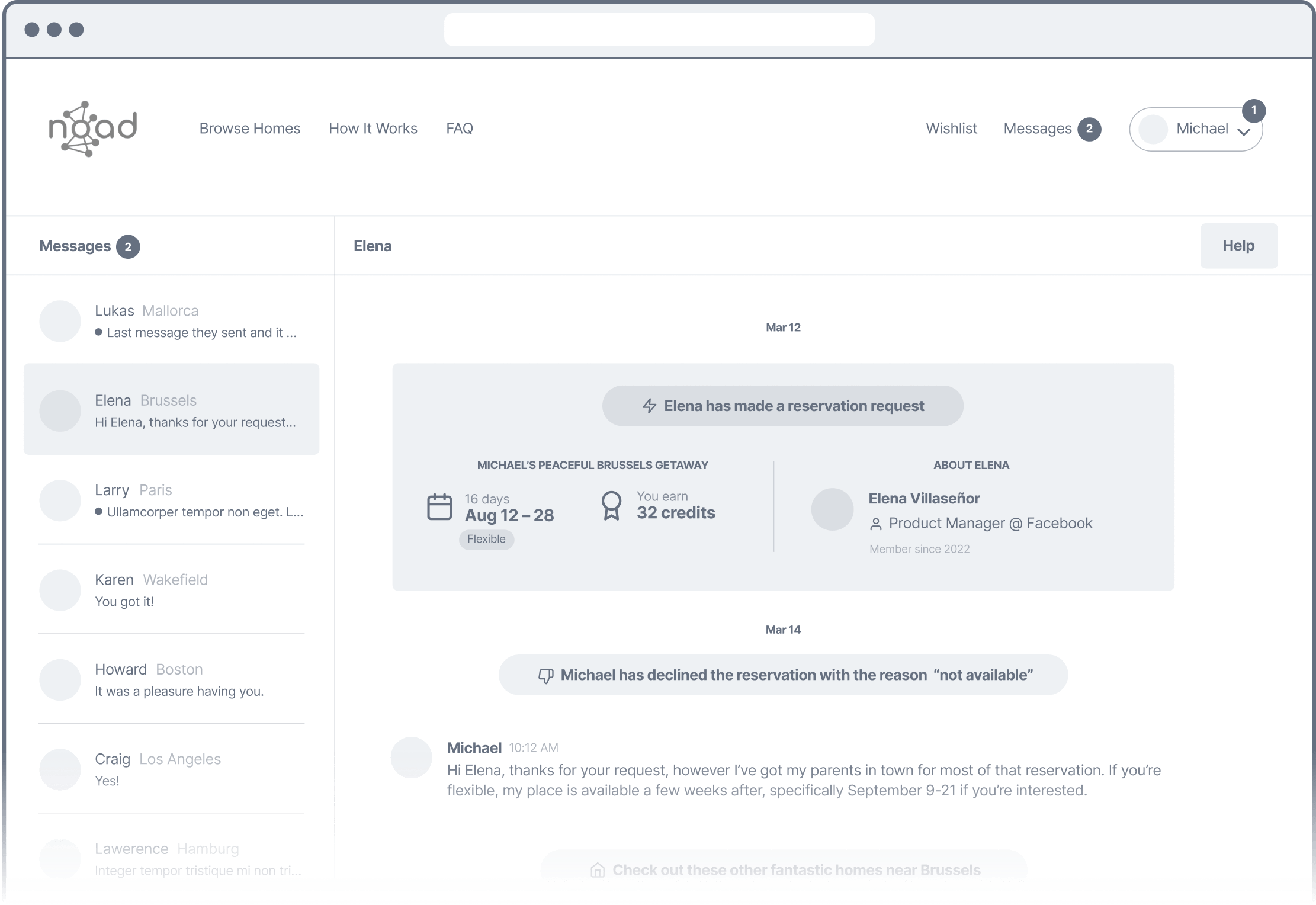
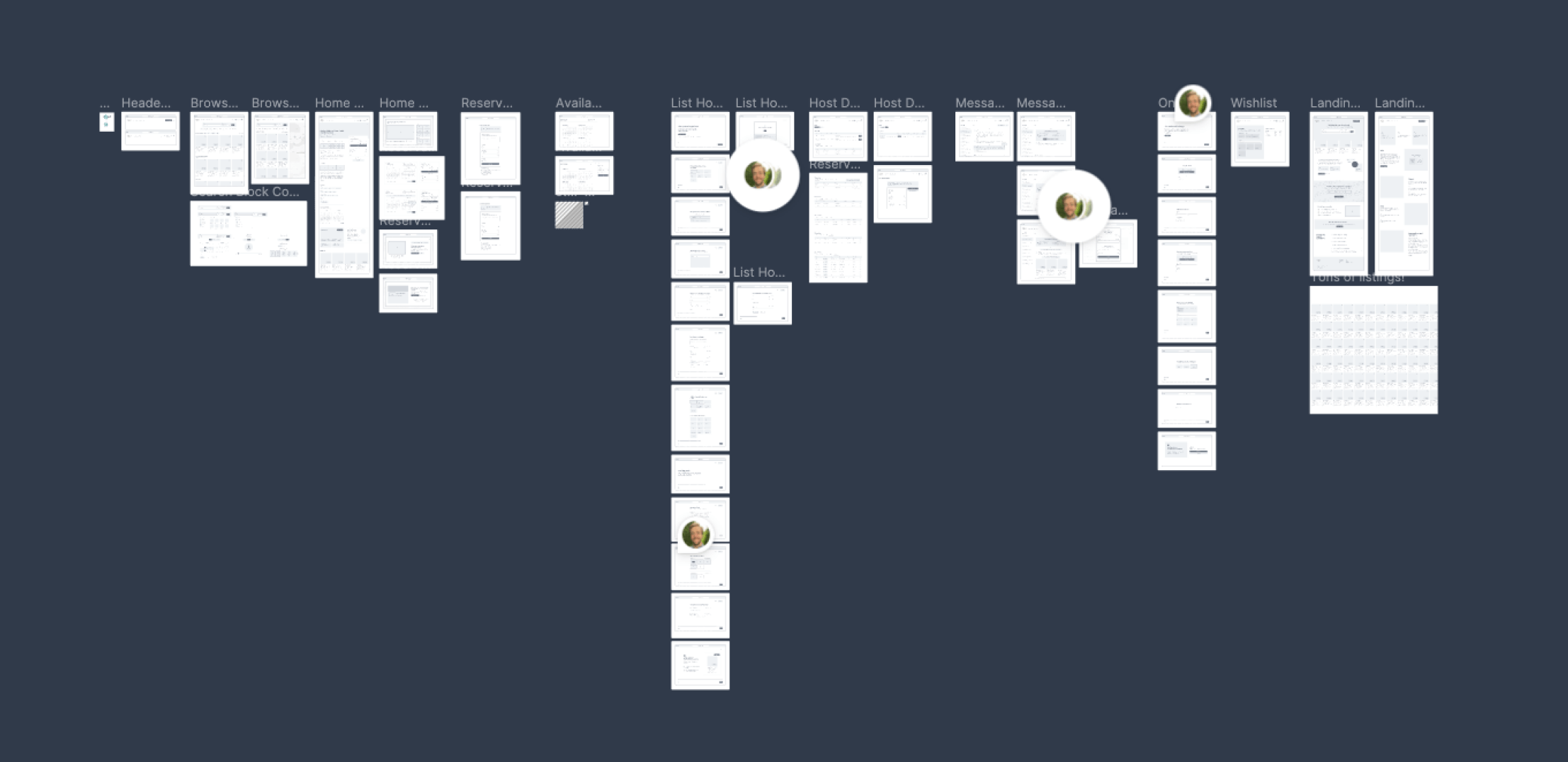
Final Designs
Introducing the Noad Exchange Redesign

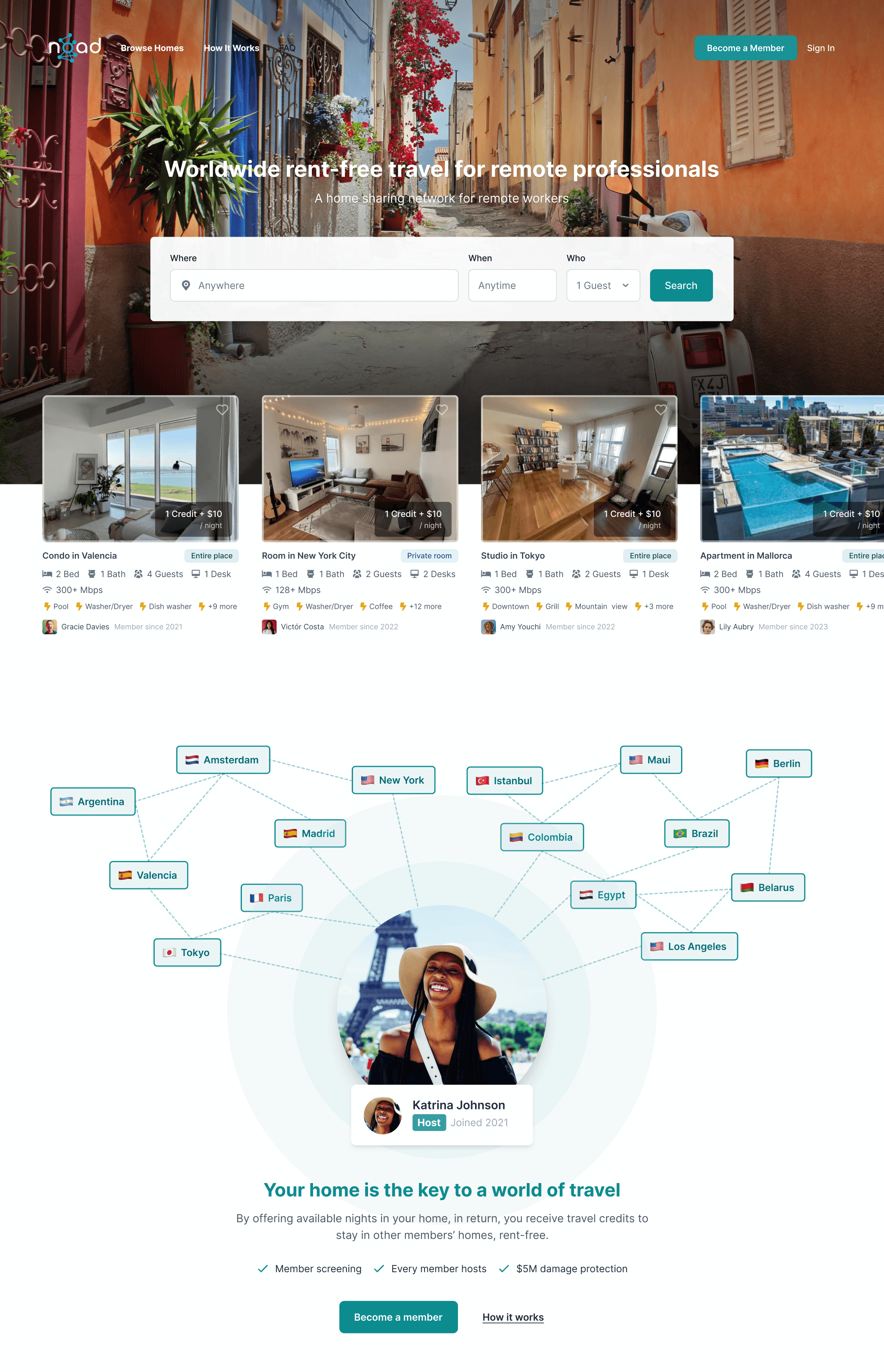
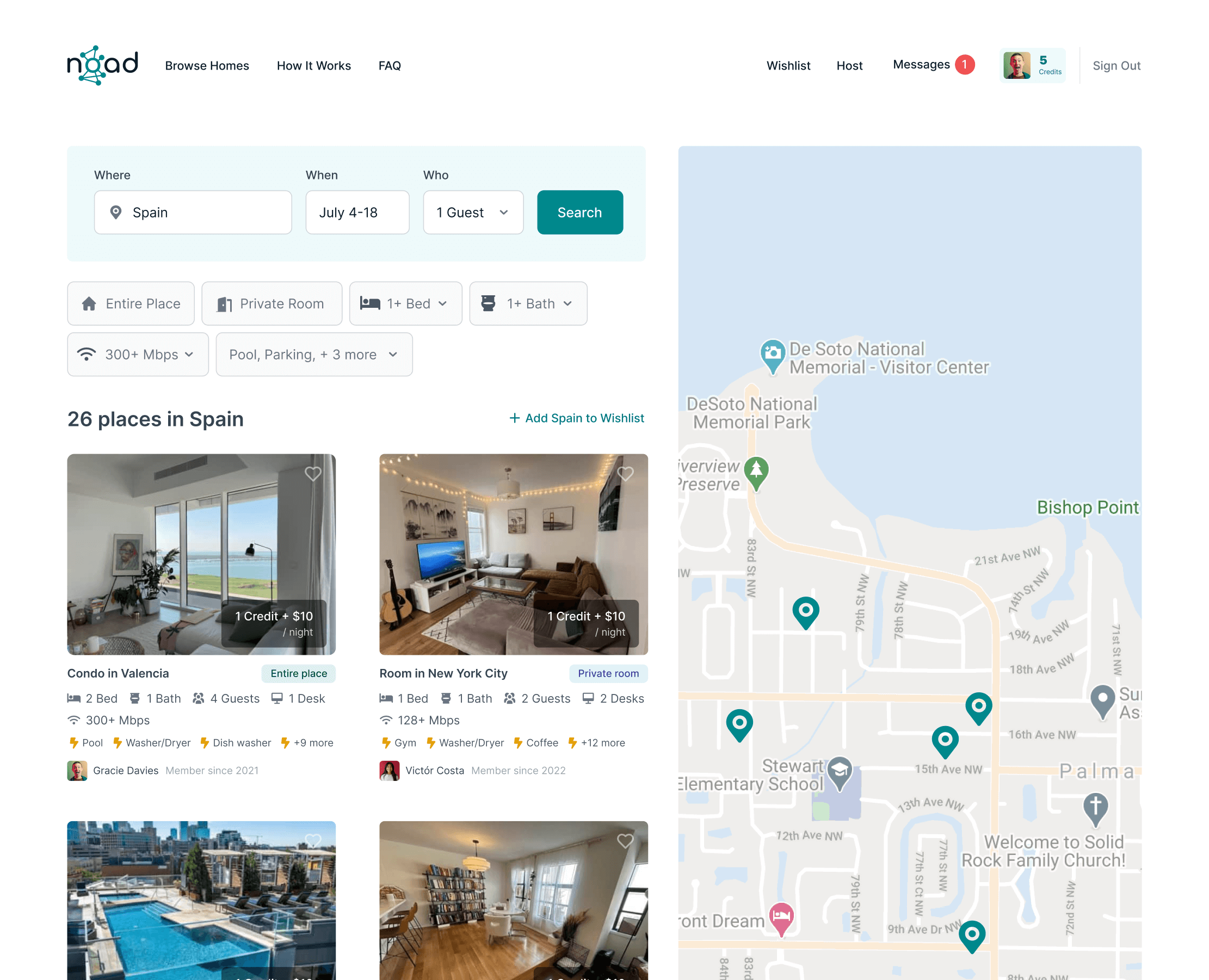

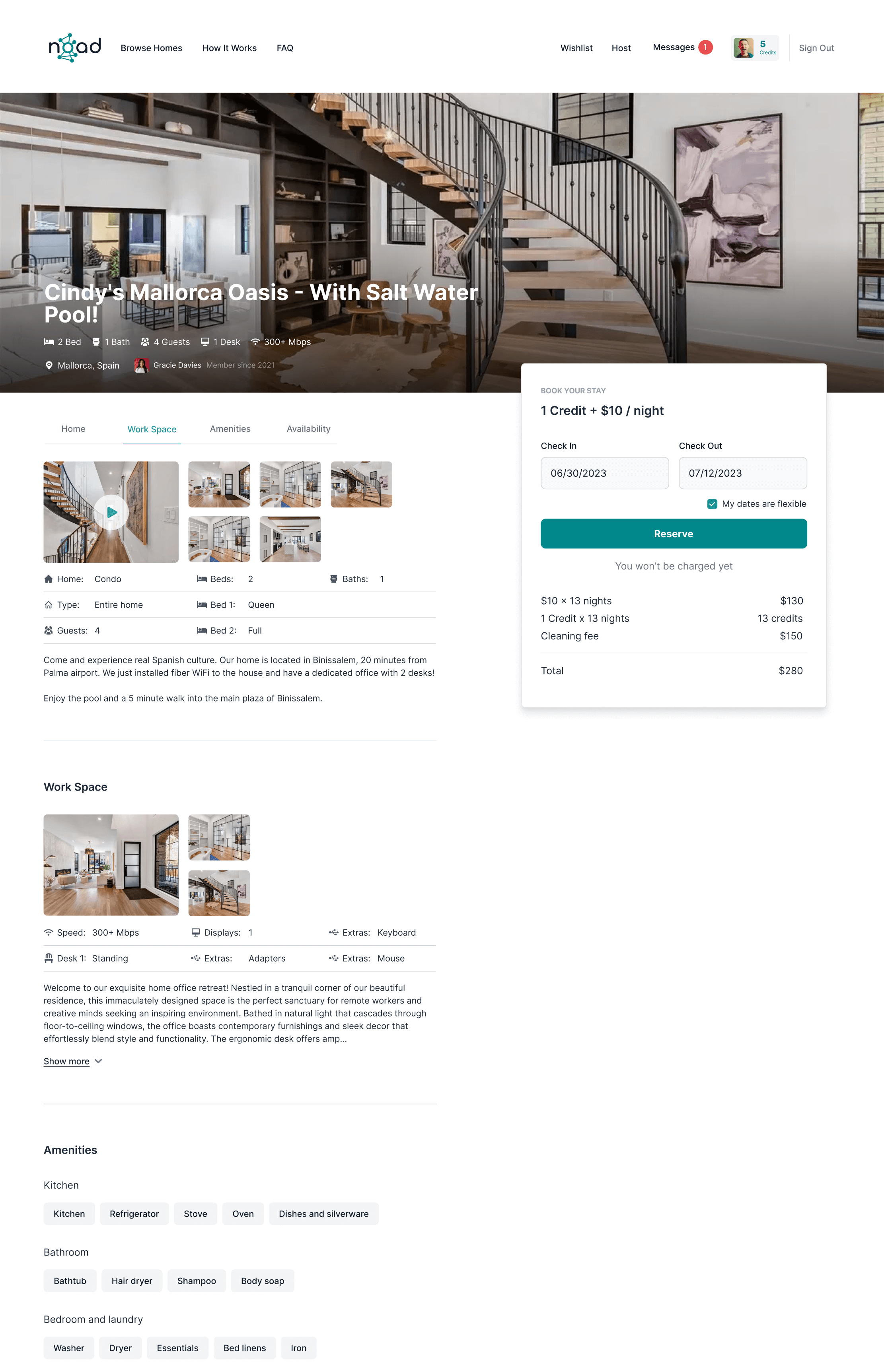
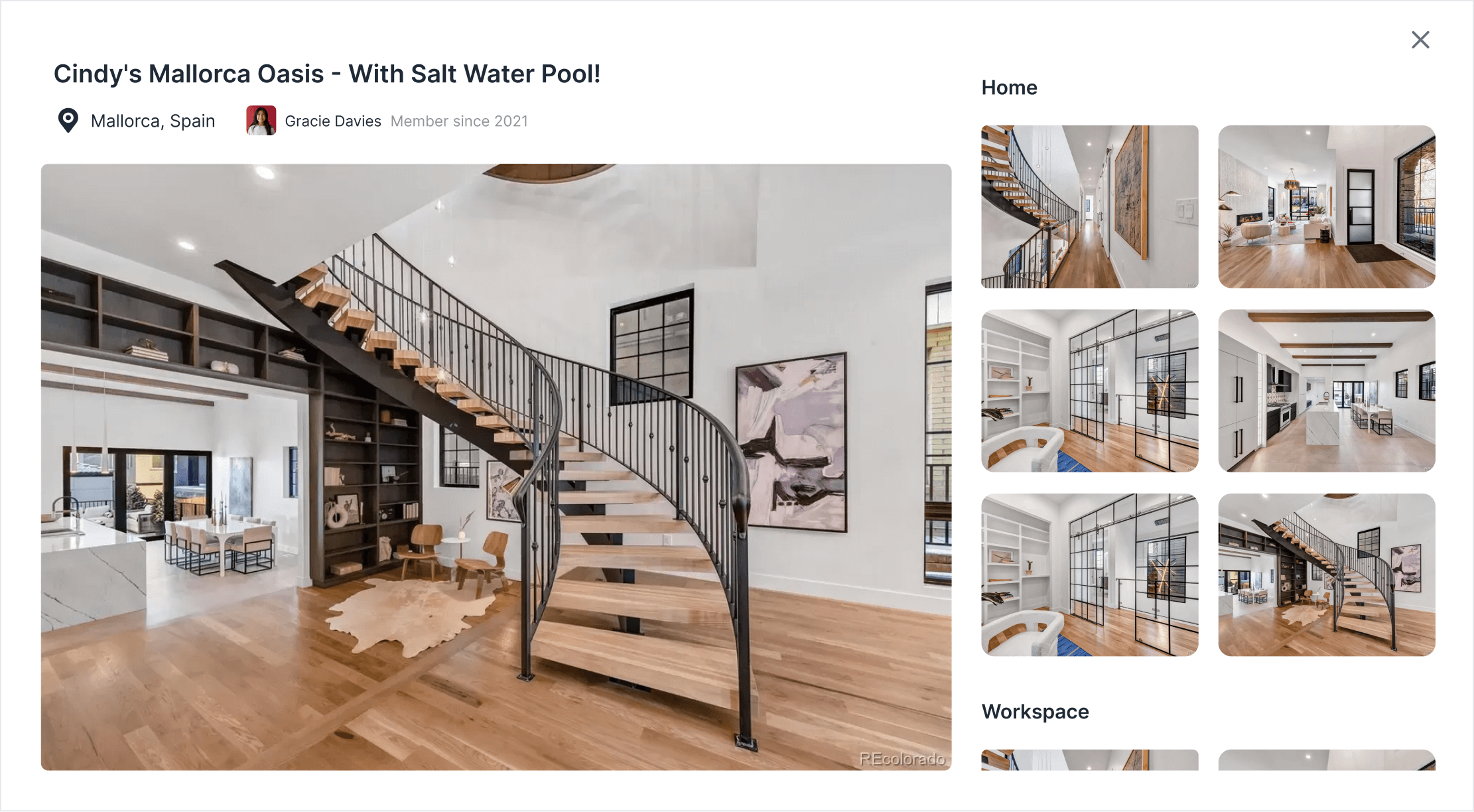
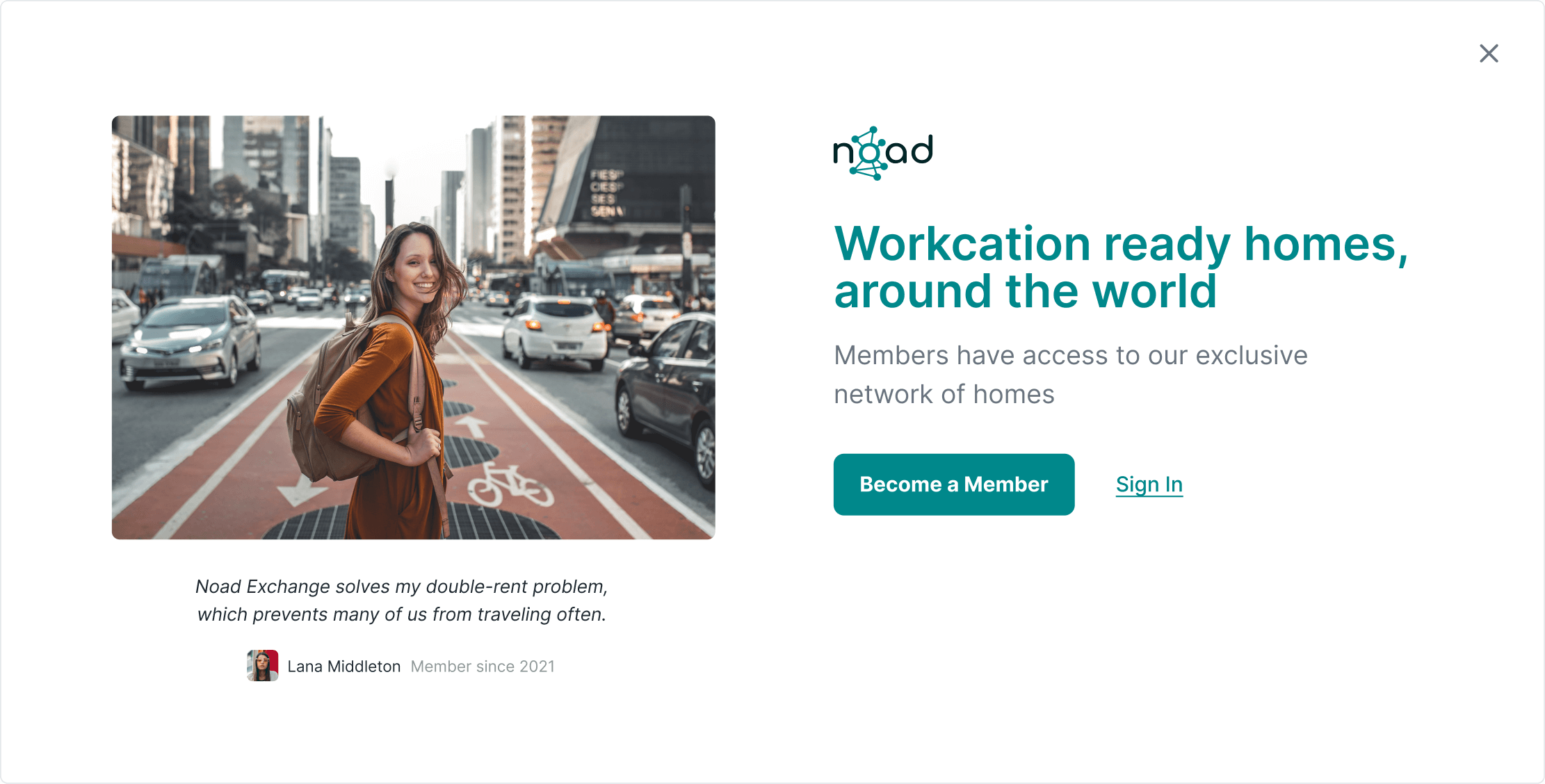
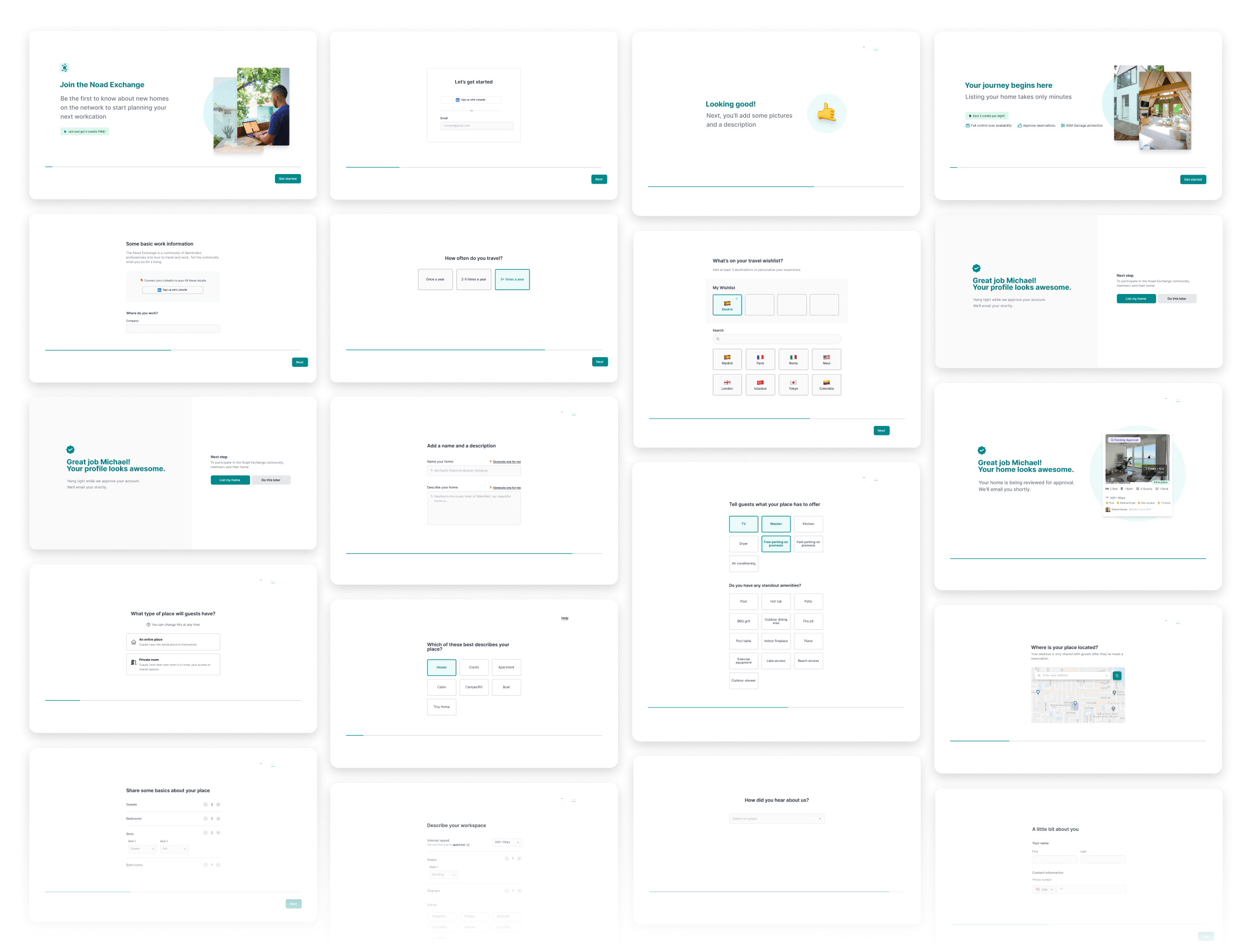
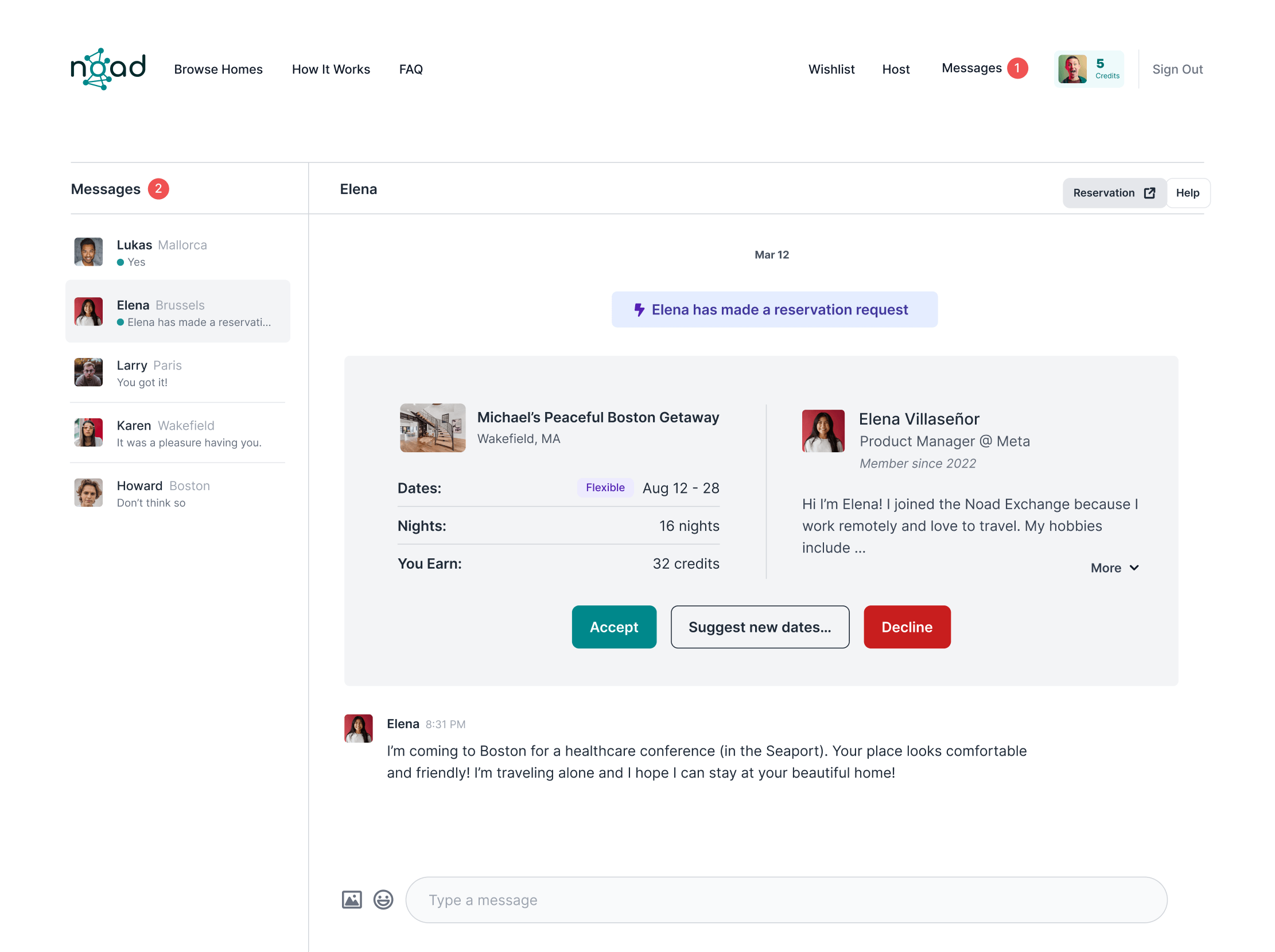
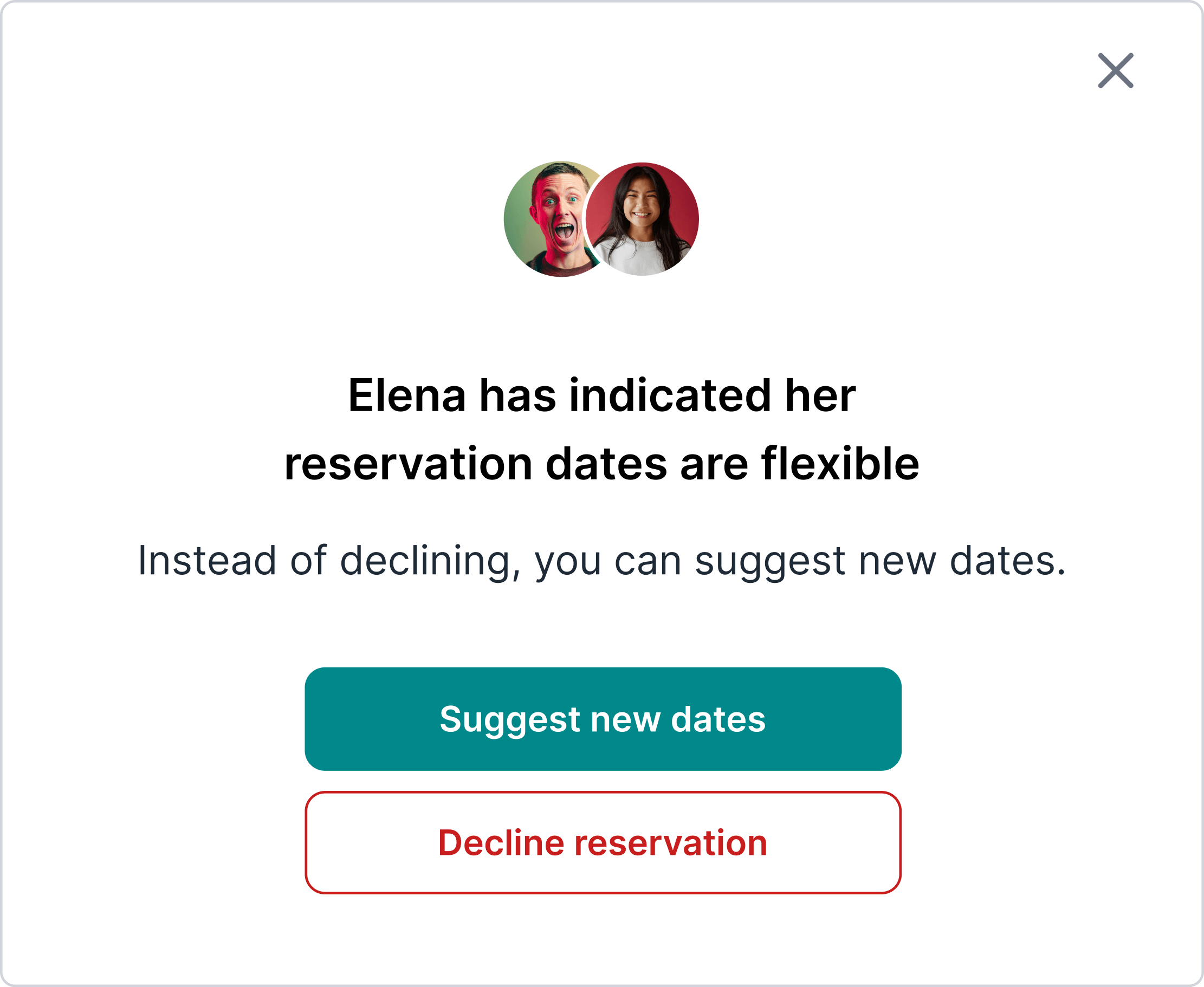

Pattern Library
It was important that Noad engineers could extend areas of the platform beyond my work. We developed a theme using Tailwind CSS, ensuring 1,000s of UI components were aligned to the Noad brand.
Impact & Learning
![]()
Results & Handoff
Our job concluded by handing off our user research and design files to Noad Exchange's product and engineering teams. Their next step was to begin building it on a new technology stack.
My designs are currently being implemented at the time of publishing this case study, I can, however, speak to the early results we tracked during the design phase. I validated key metrics during user testing that related to our project goals and helped us understand how we were making progress.
trending_up
Improved home listing workflow
Users said the redesigned workflow was easier to understand and complete. The ability to save their progress and return later improved their trust.
trending_up
Increased booking conversion
Users consistently reported new discovery features helped them find more relevant listings and redesigned availability calendar made it easier to book with confidence.
trending_up
Improved communication
Users reported high levels of satisfaction in the redesigned traveler/host chat feature redesigned to anticipate user needs and deliver relevant information in-chat.
Things I Learned
We chose an aggressive timeline for this project. I'm happy with the end result, and most importantly the Noad founders are happy.
If I could do it all again, I would consider using a few different brainstorming exercises with the Noad founders early in the project. I could have uncovered deep insights in a quicker amount of time.
Secondly, the sheer quantity of screens I was responsible was large. Almost too large given the aggressive timeframe. After generating the features list in the discovery phase, I wish I had used a sizing methodology to understand effort level, and prioritized from there.
Working with Michael has been instrumental for our business. Going through a formal product design and discovery process gave us many innovative ideas. He helped us look through a lens we didn't know existed to design a unique and differentiated product.
